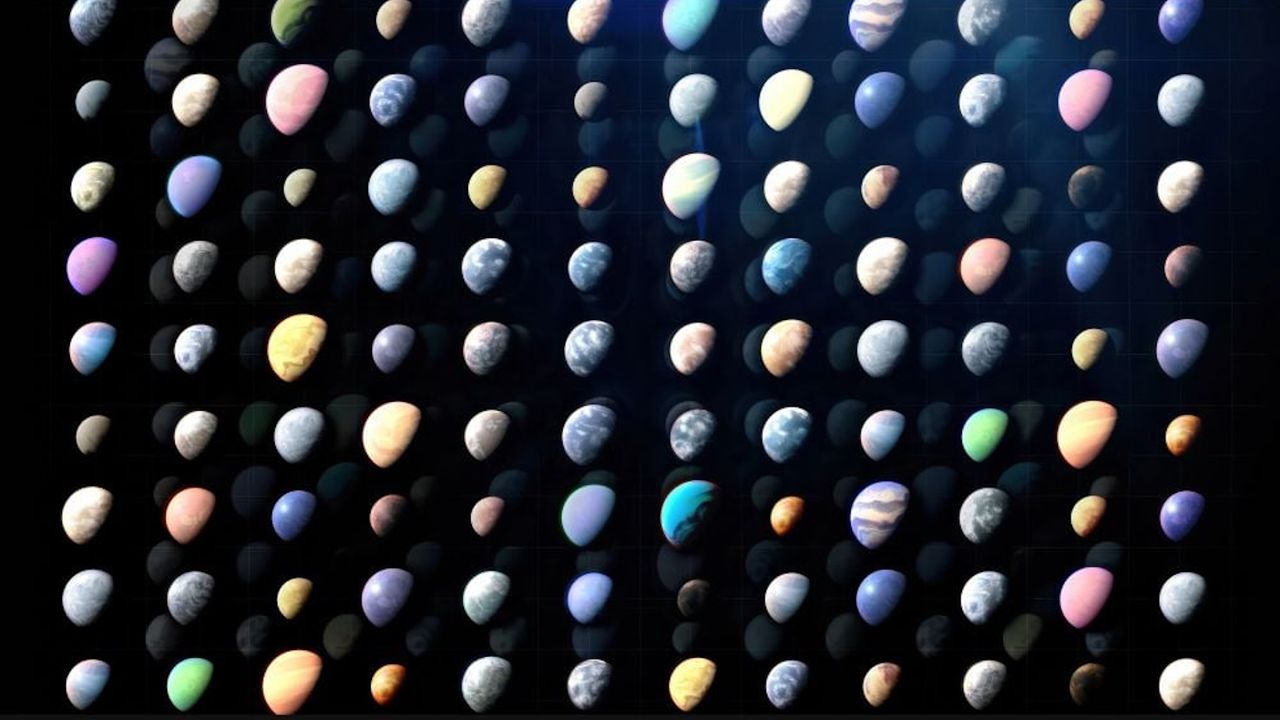Science
NASA Confirms 6,000 Exoplanets, Expanding Cosmic Understanding

NASA has officially confirmed that the total number of exoplanets—planets located beyond our solar system—has reached 6,000. This milestone marks significant progress in the field of astronomy, following nearly three decades of advances in exoplanet detection techniques. The journey began in 1992 when astronomers first identified two planets orbiting a pulsar. A breakthrough occurred in 1995 with the discovery of the first exoplanet orbiting a main sequence star.
The confirmation of 6,000 exoplanets is a remarkable achievement, though it represents a small fraction of the estimated 100 billion planets that may exist within the Milky Way galaxy. The challenges in detecting these celestial bodies are substantial, given the vast distances between stars and the interference from their brightness.
Technological Advances and Detection Methods
The majority of these discoveries have relied on indirect methods. The most common, the transit method, measures the dimming of a star’s light when a planet crosses in front of it. This technique has resulted in the identification of approximately 4,500 exoplanets. Another method, known as radial velocity, detects the gravitational influence of a planet on its star, contributing around 1,140 confirmed exoplanets to the total.
Direct imaging, while more challenging, allows scientists to analyze exoplanet atmospheres. Fewer than 100 exoplanets have been directly imaged to date. This approach provides critical insights into the chemical composition of these distant worlds.
According to Dawn Gelino, head of NASA’s Exoplanet Exploration Program at the Jet Propulsion Laboratory, “Each of the different types of planets we discover gives us information about the conditions under which planets can form and, ultimately, how common planets like Earth might be.” This knowledge is vital in the ongoing search for potentially habitable worlds.
The Future of Exoplanet Exploration
As of July 2025, NASA’s TESS mission has identified 7,655 candidate exoplanets, with over 600 confirmed. The endeavor to validate these candidates is labor-intensive, often requiring follow-up observations with different telescopes to eliminate false signals caused by stellar activity or observational artifacts.
Future missions are set to enhance our understanding of exoplanets significantly. The upcoming Nancy Grace Roman Space Telescope, scheduled for launch in 2027, aims to discover thousands more exoplanets through microlensing techniques. Additionally, the European Space Agency’s PLATO mission is designed to identify rocky exoplanets around Sun-like stars, anticipated to launch in 2026.
China is also entering the field with its Earth 2.0 (ET) Space Telescope, which is expected to launch in 2028 and focus on identifying Earth-sized exoplanets. As these initiatives unfold, a wealth of new data will likely emerge, potentially reshaping our understanding of planetary systems.
The quest for understanding habitability remains a primary focus within exoplanet science. Identifying biosignatures—chemical indicators of life—on distant planets is crucial. The James Webb Space Telescope (JWST) is currently addressing this challenge with its advanced infrared spectrometry capabilities, producing promising early results.
As scientific capabilities expand, the prospect of discovering exoplanets similar to Earth is becoming increasingly tangible. The ultimate goal remains clear: to determine whether we are alone in the universe. Each new discovery adds a piece to the puzzle, bringing us one step closer to answering this profound question.
-

 Lifestyle5 months ago
Lifestyle5 months agoLibraries Challenge Rising E-Book Costs Amid Growing Demand
-

 Sports4 months ago
Sports4 months agoTyreek Hill Responds to Tua Tagovailoa’s Comments on Team Dynamics
-

 Sports4 months ago
Sports4 months agoLiverpool Secures Agreement to Sign Young Striker Will Wright
-

 Lifestyle4 months ago
Lifestyle4 months agoSave Your Split Tomatoes: Expert Tips for Gardeners
-

 Lifestyle4 months ago
Lifestyle4 months agoPrincess Beatrice’s Daughter Athena Joins Siblings at London Parade
-

 Science4 months ago
Science4 months agoSan Francisco Hosts Unique Contest to Identify “Performative Males”
-

 World4 months ago
World4 months agoWinter Storms Lash New South Wales with Snow, Flood Risks
-

 Science5 months ago
Science5 months agoTrump Administration Moves to Repeal Key Climate Regulation
-

 Business5 months ago
Business5 months agoSoFi Technologies Shares Slip 2% Following Insider Stock Sale
-

 Science5 months ago
Science5 months agoNew Tool Reveals Link Between Horse Coat Condition and Parasites
-

 Sports4 months ago
Sports4 months agoElon Musk Sculpture Travels From Utah to Yosemite National Park
-

 Science5 months ago
Science5 months agoNew Study Confirms Humans Transported Stonehenge Bluestones









